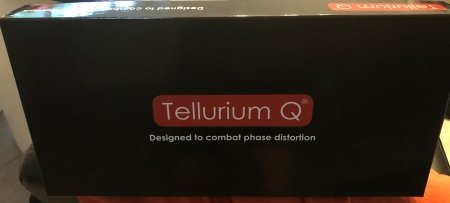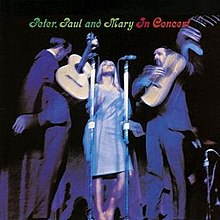News
Tellurium Q Black II Speaker Cables – COMPLETE REVIEW
The Tellurium Q Black II Speaker Cables are given an extended analysis by Howard Milstein
Just when Ive finished some hard-core examinations of some fine Audiophile speaker cables, it appears that Ive been (somewhat reluctantly) drawn back in to the never ending speaker cable phenomenon – in this case with the somewhat new (at least here in the States) Tellurium Q brand of high-quality cables .
Throughout my years of listening and reviewing some of the finest audiophile products, I will admit to having a tendency to admire many of the fine high-end products coming out of the UK, particularly British Loudspeakers. If you are not as yet familiar with the Tellurium Q Brand of cables, they are indeed, a British Company.
What initially drew me into this small cable company was some of the promotional material they display on their website. They seem to portray a tight-lipped, secretive way of describing their background and how they specifically design their cables as well as the differences between their products and other high-end cable manufacturers. This is ostentatiously obvious when reading about the companys production methodologies and Tellurium Q is not afraid to express this.
Mr. Geoff Merrigan, the managing director and strategy master of Tellurium, was originally trained in industrial chemistry (materials, etc.) and he has kept his passion for science and learning through a range of activities which has given Tellurium Q this unique approach. There is one thing we can learn from Geoff: that to get the most natural sound, it is not just about merely conduction:
“Any conductor will act as an electronic filter, e.g. frequencies relative to one another get shifted with each material they pass through and are also affected by insulators, geometries, shielding, etc. Importantly, materials used affect the range of frequencies in dissimilar amounts. Hence, this becomes a finely tuned balancing act to make sure that you get a natural, transparent transmission”.
The Tellurium Q cable range is separated into three families: Blue, Black, and Silver.
The Black II speaker cables were designed from what the company learned in their development of their prodigious Silver Series Diamond range and are meant to be an improvement to the original and extremely popular Black Speaker Cables.The Black II is the updated entry level cable in the Black family but it no way does it present itself as entry level product with its outstanding performance!
Many of the early prototypes Geoff made himself, building a sizeable number of the cables that his customers own. His understanding of material science gave him the ability to visualize simulations of various materials, configurations and how they would most probably behave. But enough of the science. The bottom line, as always, is how the particular product in questions sounds and most importantly, integrates with the individuals personal audio components as well as the complete system in itself.
The US distributor, Jeff Halpern of Tone Audio Imports, graciously gave me the opportunity to explore the updated Tellurium Q Black II (2.5 meter pair, ) cable and as we proceed, I aim to give our readers a detailed expose of their mid-line speaker cables sound qualities; these being part of a series of at least 9 different models along with the companies “Statement” Cables which include a series of interconnects and power cords. These are Tellurium Qs current ultimate proclamation of what this company is currently achieving.
The original Tellurium Q Black speaker cable, (which I personally never had the chance of auditioning), was an award winning and exceedingly successful yet subdued offering for the company, thus being a lucrative way to squeeze into their Black family level of products. The word in England and other parts of Europe was that it performed to a very high standard.
Not including the above Statement series, Telluriums top of the line and exceedingly well received Diamond Silver Cables are priced at approximately $1100 per meter here in the States; quite expensive indeed! Our Tellurium Black II cables reviewed here are priced at $375.00 for a 2.5-meter pair and there is an “Ultra Black” Model that hovers above this as well.
Lets start out by taking a look at the associated components used to evaluate the Tellurium Q Black 11s. The digital front end was my Marantz SA10 s1 SACD player and Linn LP12/ (circa 1990) with a Naim Aro/Lyra Delos Cartridge for the vinyl front end. Loudspeakers used were my vintage Spendor BC-1s, the Quad ESL modified 63s and the newest DALI Oberon 7s (review forthcoming). Amplification was the profound Peachtree Nova 300, circa 2019 (review forthcoming). Alternately, Digital Coax out to the Nova amp/Dac was a newly custom made and terminated Audio Art D-1SE Digital Cable and Stager Silver Solid Interconnects when appropriately called for. The Analysis Plus Black Mesh Oval II Speaker Cables, which I currently use were intensely compared to the Tellurium Q Black II.
STARTING OUT
Tellurium adamantly states that the cables require a “patient” audiophile and you must not jump to conclusions too quickly” – something I quickly found out during the auditioning period.
When initially hooked up, and replacing the very fine sounding Analysis Plus Black Mesh 2 speaker cables, I found them to sound quite good indeed. However, string sound had a whisper of raspiness as compared to the Analysis Plus Black Mesh II Cable. Classical piano works sounded a touch clouded by comparison. However, with a further break in time, things seemed to change incrementally. Over a few weeks, I noticed differences with respect to piano tone – as well as all instrumental timbres; particularly the massed violins as you will see further on.
Meanwhile, I kept experimenting back and forth a bit with the Analysis Plus Black Mesh IIs…promptly and confidently putting back the Analysis Plus as I noticed piano tones and an overall midrange richness on well recorded classical and acoustically recorded popular program material to perform a bit more accurately than the Tellurium Q Black IIs.
Many well recorded CDs and some of my live program WAV classical CD-r downloads of pianists Helene Grimaud and Mitsuko Uchida playing Mozart enunciated the piano tones marvelously as they hit each note on the keyboard; audibly bringing forth a more discreet, and harmonically cleaner sound with the Analysis Black Mesh Cables. However, the story does not end there!

PATIENCE
As always, particularly with Loudspeaker Cables as Tellurium states, break in time is mandatory. Sure, two or three days is a good starting point, but even after almost a month of interchanging speaker cables, things seemed to stay the same. Then, finally one night, I put on my FLAC Downloaded album of one of my reference piano concerto recordings (Alfred Brendel playing Mozart Piano Concertos 9 & 14, DSD on the old Vangaurd label – 2.8MHz/64fs )

This happened after once again, reinstalling the Tellurium Q Black IIs and that particular night after weeks of persistent and constant use of the Tellurium Q Cables, quite unexpectedly, the turning point finally came to fruition; literally a day before I was to throw in the towel! I pushed the play button on the Marantz disc player and the music began. The Telluriums not only improved and surpassed the Analysis Plus on well recorded piano music but was equal in quality, if not better with respect to violin and massed string tone!
GETTING BETTER ALL THE TIME!
As the concerto began, suddenly my ears perked up when the first movement of Mozarts K.271 introduced Brendels piano intervening with the orchestra in a way I had not heard previously. The piano tone was more “immediate” without being forward and had a cleaner transient snap as his hands hit the keyboard. Wait a minute, I proclaimed, “What is going on here and should I believe my ears? I continued listening as Brendels outstanding keyboard aptitude maintained its emanating, gorgeous piano tones; being a touch to the left of the center of the soundstage image with an amazingly authoritative audible potency. The balance of the Orchestra accompaniment also was distinctly airier and more perceptible beyond the loudspeaker enclosures. Would these cables keep improving, I wondered?
Having recently installed 2 GIK Monster Bass Traps (with range limiters) along the upper corners of the front wall in my listening room, it became immediately apparent that the bass response from the test loudspeakers had become much “tighter” and authoritative as it interacted in the room. This in turn gloriously brought out the underlying tonal accuracy of the full system and particularly brought forth a much more solid mid-bass response to the Tellurium Q Black IIs as well as the overall high frequency ambience and decay time.
At this point in time, I would not be going out on a limb by proclaiming that the Tellurium Black IIs overall sound balance was perceived to be truly outstanding every way!
The “value priced” Dali Oberon 7 loudspeakers display a delectably open, gratuitously detached sound quality as well as being far reaching in its depth presentation offering an intriguing concert hall style audible impression. At the concertos finish, I re-employed the Analysis Plus Black Mesh II Cables and replayed the piece from the start trying to establish and confirm this new audible experience I was getting from the Tellurium Black IIs.
Sure enough, Brendels piano was consistent and precisely placed within the image but to my surprise, that quick, clean harmonic snap of the individual piano key tones was somehow slightly overblown or fat in the lower midrange with a tiny, tiny bit of room mode-note blur at certain frequencies above middle C. Dont get me wrong; the Analysis Plus Black Mesh II displayed itself very well, but when the Telluriums Qs “broke in” it was now apparent that these Cables had finally come in to their own (approximately a month) and in a way that was a bit unexpected yet colossally rewarding!
The excitement now had built up and more music was tried, both with the Oberon 7 and the Spendor BC1. I put on Hélène Grimauds Beethoven as well as her live interpretation of the Emperor at the BBC Proms on a WAV music file I made from my You tube channel. The sound was exceptionally reproduced with piano and orchestra, making one believe you were in the 5th row of The Royal Albert Hall. I could literally see and hear (audibly) her hands moving on the keyboard. This was distinctly helped out by the superb image qualities of the Dali Oberons. Next up I proceeded to play the downloaded rip of the late Freidrich Guldas interpretation of Mozarts Piano Concerto 27 with Claudio Abbado and the Weiner Philharmonic, both on 24 bit FLAC as well as my older Deutche Gramophone Vinyl recording of many years back.
The Tellurium Q Black IIs allowed this vintage analogue performance to keep all its “vinyl” qualities of the Deutche Gramophone record intact, with the elegant yet restrained string tone cleanly, yet lushly presented. Guldas piano tones were amazingly clear cut with each keyboard hit with an exuberantly tight and forceful left-hand bass line! This became even more noticeable on the vinyl album, (even with a few minor pops and clicks) while engaging the Lyra Delos Cartridge. It was a bit shocking indeed, to hear such an explicit and EXACT keyboard sound being extracted from this analogue recording of the mid- 1970s. The Telluriums mid-bass accuracy was now exhibiting a dramatic left-hand response from the grand piano with a vigorously deep mid-bass response. Needless to say, the Telluriums were not coming out of this system any time soon!

It is important to recognize that the Tellurium Q Black II, while producing some enthralling reproduction of the better program sources, was unmistakably doing so with a minimum of sound manipulation and coloration, letting the complete naturalness of the program material and the studio venue shine through the system and into the listening room. Its overall sound balance was quite ideal and on an even plane within the soundstage; not to up front or to recessed. These cables blended exceptionally well with the discerning Peachtree Nova 300 allowing it to perform to a more staggering degree than it had any right to!
I then decided to pull out a few older, yet pristine analogue vinyl recordings of Peter, Paul, and Mary along with one live performance digital download from 1969. The voices of the trio blended lovely and naturally with the Telluriums particularly with this wonderfully remastered DSD studio album. Sibilance from the Quads and Spendors were non-existant with the Black IIs while acoustic guitars were full and rich in the midrange while also sounding deep, yet subtly controlled respectively in the bass frequencies.
 Peter Paul & Mary Live 67 DSD
Peter Paul & Mary Live 67 DSDUltimately, as this review was being drafted, I casually put on a ripped CD-R from the audio track of a video performance of Daniel Barenboim conducting Beethoven Symphony # 8 (~800MB STEREO: PCM / SURROUND) from the BBC Proms. Slowly, I was drawn over to my centrally located listening seat and began listening to this performance that was quite literally breathtaking! The Tellurium Q Black II brought me and the BC 1s right to the forefront of the conductors podium at the Royal Albert Hall! These are the times when a particular audio product can bring a dedicated enthusiast to music heaven!

CONCLUSION
There is no doubt in my mind that the Tellurium Q Black II speaker cables are a supremely magnificent product that virtually captures and reproduces the ultimate in high definition sound quality. When mated to some of todays finest audio components, they surrender something “special” and naturally “accurate” (assuming that accuracy is your goal.) in the way it performs its duty of electrically connecting the loudspeakers to its amplifier sources. However, one must remember that these terrific speaker cables need a totally thorough break in time in order to exhibit their utmost quality of sound reproduction. I assure you, they are worth the wait!
As of this writing, the Tellurium Q Black II is my reference loudspeaker cable. It does almost everything perfectly, particularly in light of its price point in the world of “audiophile” luxury speaker cables. I will admit that with performance such as this, I am quite tempted to want to examine Telluriums Ultra BlackII”, (one level above these) as I wonder if, or how the Tellurium Qs Ultra could get any better!!
There are a limited amount of US dealers who are currently selling Tellurium Q Cables; but if you seek…you shall find. Quite ironically, the Tellurium Q Black II Speaker cable will be the first product reviewed so far in “The Sound Advocate” that will be awarded an outstanding rating with regards to its performance and value!
The Tellurium Q Black II is $75.00 per mono meter; a 2.5M pair is $375 retail, 3M pair is $450 retail.
27.04.2021Back
